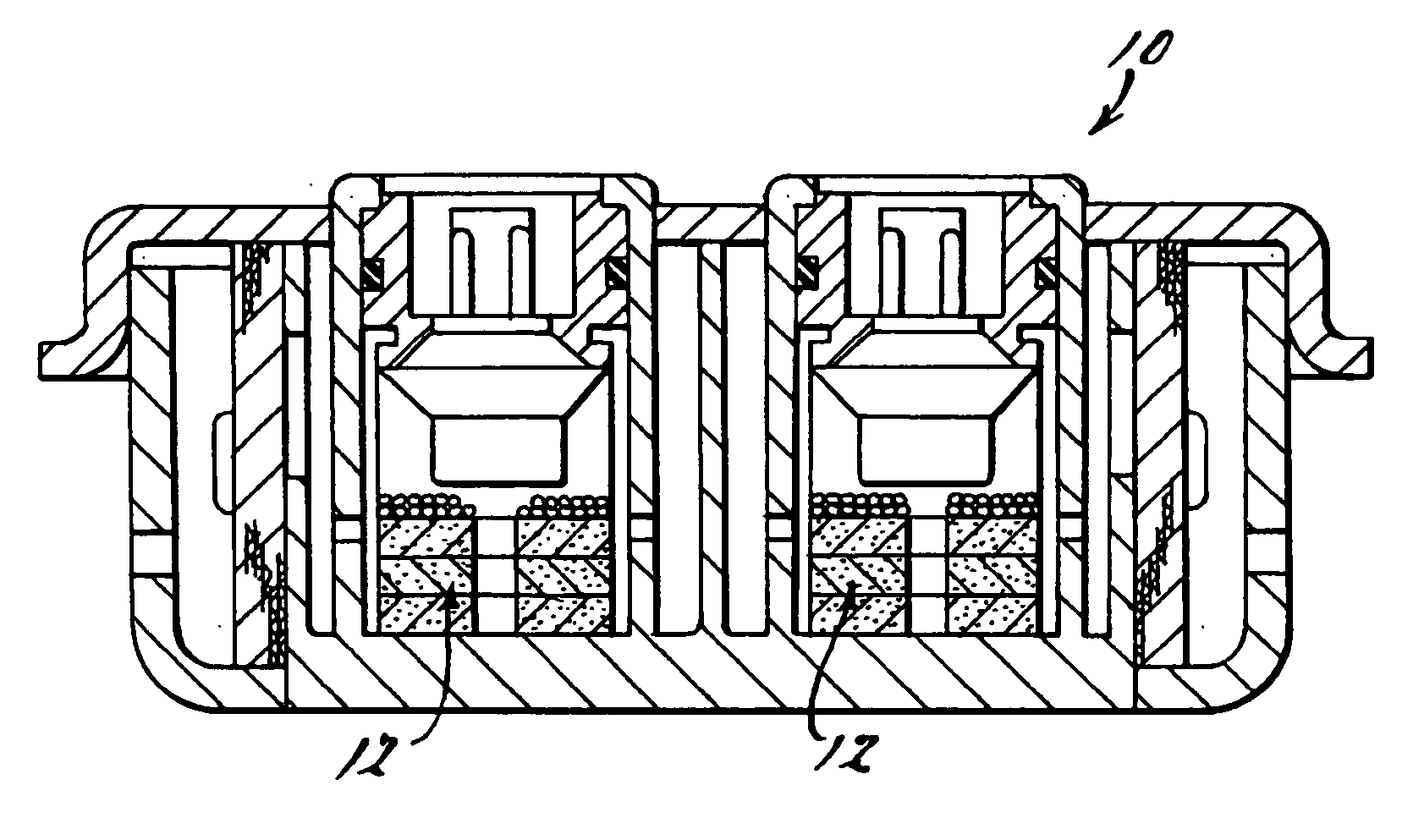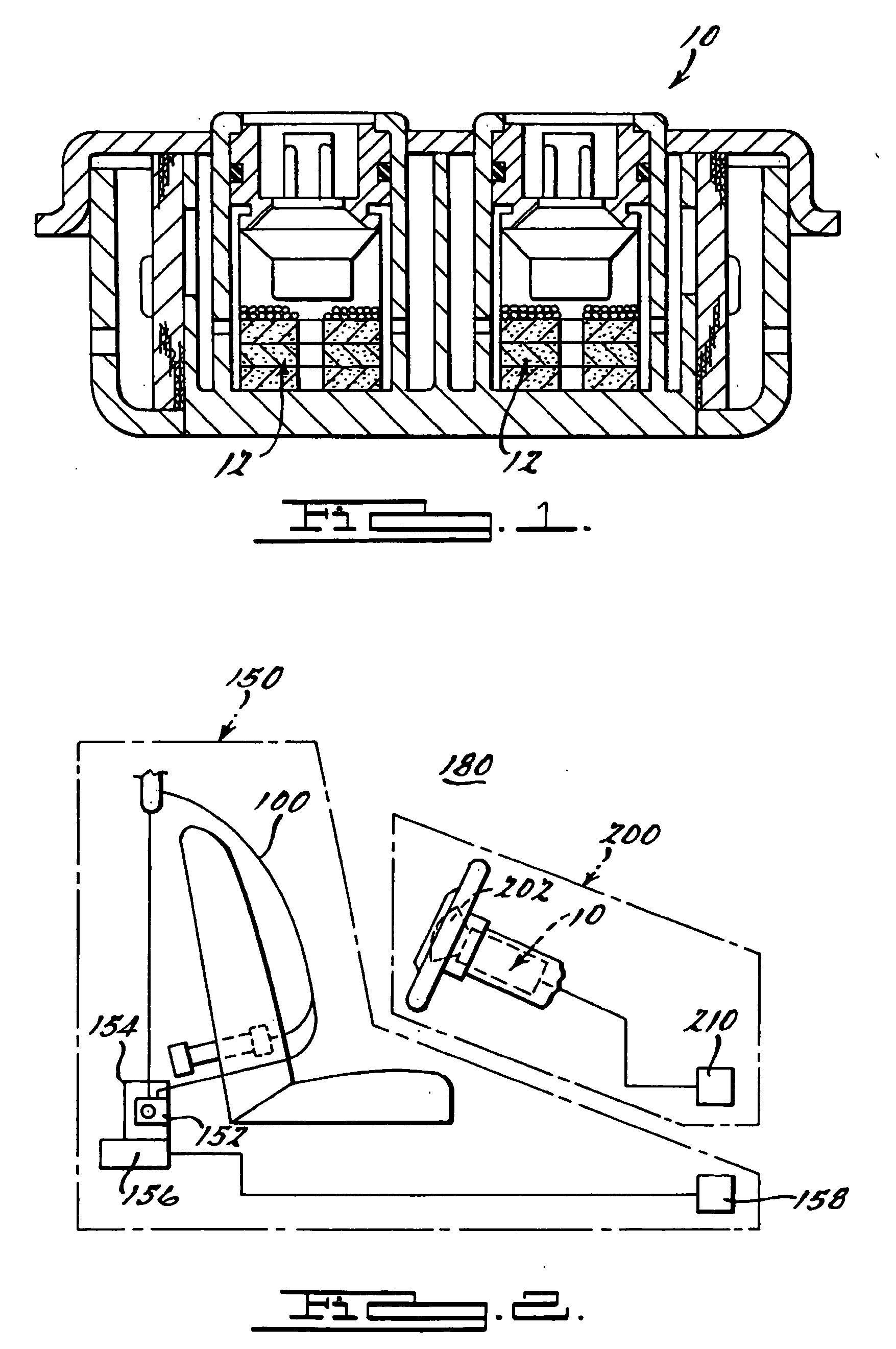Gas generating system
a technology of gas generating system and nitrocellulose, which is applied in the direction of pressure gas generation, explosives, weapons, etc., can solve the problems of high carbon monoxide content, inability to achieve ballistic tailoring with the use of nitrocellulose, and relative higher carbon monoxide content, etc., to achieve the effect of enhancing the ballistic properties, increasing the burning rate of propellant composition, and increasing the amount of carbon monoxid
- Summary
- Abstract
- Description
- Claims
- Application Information
AI Technical Summary
Benefits of technology
Problems solved by technology
Method used
Image
Examples
example 1
[0017] A composition was homogeneously mixed in a known manner, the composition containing nitroguanidine, potassium perchlorate, and cellulose acetate butyrate. Upon applying heat from a hot plate, the composition did not autoignite at 320 C, and a black char resulted.
example 2
[0018] It has been shown that the addition of ammonium molybdate at about 1% by weight to the composition of Example 1 containing cellulose acetate butyrate, nitroguanidine, and potassium perchlorate resulted in an ignition temperature of 260 C, as measured by hot plate.
example 3 and example 4
[0019] It has been shown that the addition of molybdenum trioxide at about 1% or 2% by weight to the composition of Example 1 containing cellulose acetate butyrate, nitroguanidine, and potassium perchlorate resulted in an ignition temperature of 262 C., as measured by hot plate.
[0020] It can be seen from the examples presented that the use of a burn inhibitor or ignition catalyst, in accordance with the present invention, results in ignitable compositions that effectively mitigate the harm to associated equipment.
[0021] In yet another aspect of the invention, carbon monoxide scavengers may also be provided thereby maintaining the required effluent rates notwithstanding the use of a cellulosic binder. Metal oxides such as manganese oxide and cupric oxide, sulfates such as ammonium sulfate, and other scavengers are contemplated at about 0.1-20% by weight of the composition when optionally employed. By employing CO scavengers, the overall cost of the gas generant composition may be r...
PUM
| Property | Measurement | Unit |
|---|---|---|
| particle size | aaaaa | aaaaa |
| weight percent | aaaaa | aaaaa |
| weight | aaaaa | aaaaa |
Abstract
Description
Claims
Application Information
 Login to View More
Login to View More - R&D
- Intellectual Property
- Life Sciences
- Materials
- Tech Scout
- Unparalleled Data Quality
- Higher Quality Content
- 60% Fewer Hallucinations
Browse by: Latest US Patents, China's latest patents, Technical Efficacy Thesaurus, Application Domain, Technology Topic, Popular Technical Reports.
© 2025 PatSnap. All rights reserved.Legal|Privacy policy|Modern Slavery Act Transparency Statement|Sitemap|About US| Contact US: help@patsnap.com


